INITIAL REACTION
Rainforest is the name of the sculpture. From the pamphlet handed out in class, I’m familiar with the pieces general appearance, and location on campus. To view the piece, I must brave the abnormal-even-for-January cold spell, minus any Seattle rain. The idea of anything claiming to be “rainforest” this time of year only sounds reasonable on a David Attenborough film documentary.
As it turns out, the piece is exactly like a film documentary. Approaching from the North end of campus, I’m able to spot a wooded lump of seemingly purposefully untidy undergrowth. The type of bordered patch commonly seen in Pacific Northwest business parks posing as convenient low-maintenance yard care, and only succeeding as being undesignated smoke-break areas. Amongst this lazy-lawn patch should be the sculpture in question. But just like a film documentary, it will take multiple shots to see what I’m after.
Initially, I’m overpowered by the undergrowth, and only able to make out some leaning dead-wood that seems oddly purposely placed. Approaching the gym, and rounding the corner of the
undergrowth, I realize the dead-wood is actually the sculpture by Scott FitzGerald. So well blended, (or shielded from my frozen eyes) I actually missed it on first approach.
The cold seemed to give a reserved, quiet nature to the piece. The kind of quiet that will only come from an energetic summer followed by an unusually still winter cold spell. The fact that there was once life, made the sculpture seem that much more sleepy. I really feel that there was a sense of energy and life to the piece only a few short months ago.
Perhaps it’s the sense of energy lost that is so fitting for a piece intended to represent a fallen tree. Perhaps it’s the lack of rain that makes it seem stoic, and complacently peaceful. Either way, I feel like this Winter, and this Winter in particular, was exactly the last backdrop that the artist intended their work to be viewed under. Just like a film documentary, it’s hard to fully appreciate what is in front of your eyes, without being in the right setting.
The right setting for this piece, is definitely in the rainy season. When the water can be seen and heard dripping from the viney appendages reaching hopefully from the deadwood. With water running down the flanks of the dead-wood, past the gnarled holes, it’s easy to imagine the sensation of being in the rainforest. The greens and browns in the piece would truly start to take on the artist’s intention with the reflectivity of water added.
It may have been the wrong season, but the imagination of the artist can still be seen in “Rainforest”.
RESEARCH
What was the artist’s intent?
Being a Pacific Northwest native, James Herbert FitzGerald was intimately acquainted with the climate and ecology of the area. The Pacific Northwest has a temperate rainforest climate that brings an abundance of rainfall, growth, and regrowth to the region. The evergreen forests are seen with a mix of old growth and new growth, sprouting alongside each other. It is not uncommon to see new growth forming from the hollowed carcass of a fallen cedar tree. The fallen tree wearing a coat of craggy, pocked bark. Deep ridges and gnarled texturing run the length of the ancient tree.
In the same way, James FitzGerald has ascribed a similar characteristic to his work. The first of an often revisited subject matter for FitzGerald is the sculpture Rainforest. Commissioned in 1959, the sculpture was originally located near the Wilson Library building (Smithsonian). The piece now resides just outside the Wade King Recreation Center, serving as a central fountain. The sculptur e is composed of two main structures. A large vertical portion, and a less large horizontal component. Both components share a similar rutted, fragmented surface reminiscent of the evergreen forests. It is clear that the representation of the Pacific Northwest’s natural environment was the artist’s primary intent. A secondary intent could be said to be an embodiment
e is composed of two main structures. A large vertical portion, and a less large horizontal component. Both components share a similar rutted, fragmented surface reminiscent of the evergreen forests. It is clear that the representation of the Pacific Northwest’s natural environment was the artist’s primary intent. A secondary intent could be said to be an embodiment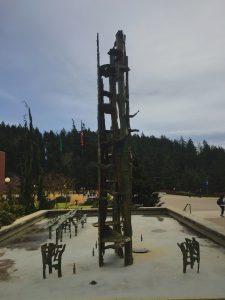 of the close link shared between the Pacific Northwest and Japan. This is achieved through the use of calligraphy inspired screens embedded in the structure.
of the close link shared between the Pacific Northwest and Japan. This is achieved through the use of calligraphy inspired screens embedded in the structure.
What information can be told about the artist?
The artist, James FitzGerald, was born in Seattle in 1910. Attending University of Washington, he attained a Bachelor’s degree in Architecture in 1935. He spent time in many different areas, but resided in Seattle long enough to complete a plethora of work for the region. He is said to have been active from approximately the 1930’s to the 1970’s, with the majority of his work appearing to fall on the later half of the spectrum. His work is primarily sighted as having his wife Margaret Tomkins as a co-contributor. They lived and worked together in a studio until their second major publicly commissioned work. The work, commissioned in 1960, is a bronze, enamel on brass, colored glass sculptural screen located in Seattle’s Public Library. During the creation of this work, their live-in studio caught fire, and burnt down. The fire destroyed most of their previous work, and necessitated a recreation of the sculptural screen. The screen that remains today is actually the second attempt (Rupp, 1992).
His time at University of Washington was shared with another student named Minoru Yamasaki. Yamasaki was studying architecture at the same time as FitzGerald (Yamasaki 1979). Yamasaki goes as far as to comment on his own difficulties in sculpture class during his sophomore year; “…(I) did an incredibly stupid piece with purple and gold clay… I was promptly relegated to the bottom of the sculpture class…” (Yamasaki, 1979). While it is unclear what influence FitzGerald may have had on Yamasaki, it is clear that he would not forget him.
Yamasaki went on to design such projects as the IBM office building in downtown Seattle, the United States Science Pavilion (now Science Center) for the 1962 World Fair, and the World Trade Center in New York. More than a few of Yamasaki’s buildings would feature sculptures from FitzGerald in prominent location.
What other work is the artist known for?
James FitzGerald is most widely recognized by his fountain sculptures in similar styling to that of Rainforest. Similar cast and welded bronze structures can be seen on location at the  Seattle Center Intiman Playhouse (1961), the IBM office building (1963), the Woodrow Wilson School at Princeton University (1966), and Plymouth Congressional Church (1967). Each share the same weather eroded look. The final piece credited to Fitzgerald is a bronze fountain completed in 1974, located in Waterfront Park (Woodridge, 1980). This piece was designed only a few months before his death, and completed by his wife from models made by FitzGerald. The piece diverges slightly from FitzGerald’s characteristic style, opting for relatively little surface texturing, and comparatively more geometric construction (Rupp, 1992).
Seattle Center Intiman Playhouse (1961), the IBM office building (1963), the Woodrow Wilson School at Princeton University (1966), and Plymouth Congressional Church (1967). Each share the same weather eroded look. The final piece credited to Fitzgerald is a bronze fountain completed in 1974, located in Waterfront Park (Woodridge, 1980). This piece was designed only a few months before his death, and completed by his wife from models made by FitzGerald. The piece diverges slightly from FitzGerald’s characteristic style, opting for relatively little surface texturing, and comparatively more geometric construction (Rupp, 1992).
Lesser known is FitzGerald’s early life and travels. This could possible be the result of the studio fire that took most of his earlier work, or the overshadowing of his later fountain sculpture work. It is said that he travelled and painted for the Works Progress Administration (WPA), a New-Deal funded art proliferation project (Princeton, 2013). During this time, tape-record interview (Kelleher, 1962) has FitzGerald reflecting on his travels and paintings for the WPA. He comments on summertime backpacking trips with Jose Clemente. He was said to be living from one hill-top fire lookout station to the next in Idaho. All the while illustrating landscapes for the WPA. It could have been this emersion in the natural landscape that influenced his later work.
What period was the sculpture made in? How might have this influenced its creation?
The time period, as well as topical events, could be argued to have influenced FitzGerald’s work. The destruction of the natural environment during WW2, and the Vietnam Conflict, could be see n as reasons to attempt to honor and preserve the significance of the forest. It seems more probable though, that FitzGerald’s work was born more purely out of a appreciation for the outdoors and the Pacific Northwest environment.
n as reasons to attempt to honor and preserve the significance of the forest. It seems more probable though, that FitzGerald’s work was born more purely out of a appreciation for the outdoors and the Pacific Northwest environment.
FitzGerald was fortunate to be raised in a period of explosive creative growth and expression. He was classmates with architect Minoru Yamasaki. He lived with expressionist painter Jackson Pollock (Princeton, 2013) for a period in New York. He travelled for the WPA with political muralists painter Jose Clemente Orozco. All of which are today considered to be great artistic minds. FitzGerald was definitely a prime contributor to the advancement of creativity during this period. This rich creative period was most likely fertile ground and prime influence for the artists of the day, including FitzGerald.
What does the current research suggest about the sculpture?
The sculpture Rainforest is a large scale structure with technically challenging construction. There is a distinct mix of braun and delicacy in the techniques used in it’s creation. Rainforest is form-casted bronze welded together. Lost wax casting is a multi step process requiring a great deal of strength and stamina. Welding (possibly TIG) is a relatively delicate process requiring accuracy and restraint. The implementation of these techniques was often assisted by Art Sjodin (Welding) and Terry Copple (Sculpting). There is a poetic symbolism in the steps used to create the form, and the metaphoric representation of the forest.
CONTRIBUTIONS
Austin Scott;
Photos and Research
Dan Hager;
WordPress Admin
Photos and Research
References:
Elise, Keller. “Conversations With Artists: James FitzGerald & Margaret Tomkins.” KingFM, 1962. Audio recording. Accessed Feb, 2017.
Princeton University Art Museum. “Campus Art Princeton.” 2013-2016. www.artmuseum.princton.edu/campusart. Accessed Feb, 2017.
Rupp, James M. “Art in Seattle’s Public Places.” University of Washington Press, 1992.
Smithsonian Institution Research Information System. “Smithsonian American Art Museum.” www.siris-artinventories.si.edu. Accessed Feb, 2017.
Woodridge, Sally B. Montgomery, Roger. “Guide to Architecture in Washington State.” University of Washington Press, 1980.
Yamasaki, Minoru. “A Life in Architecture.” Weatherhill, Inc, 1979.
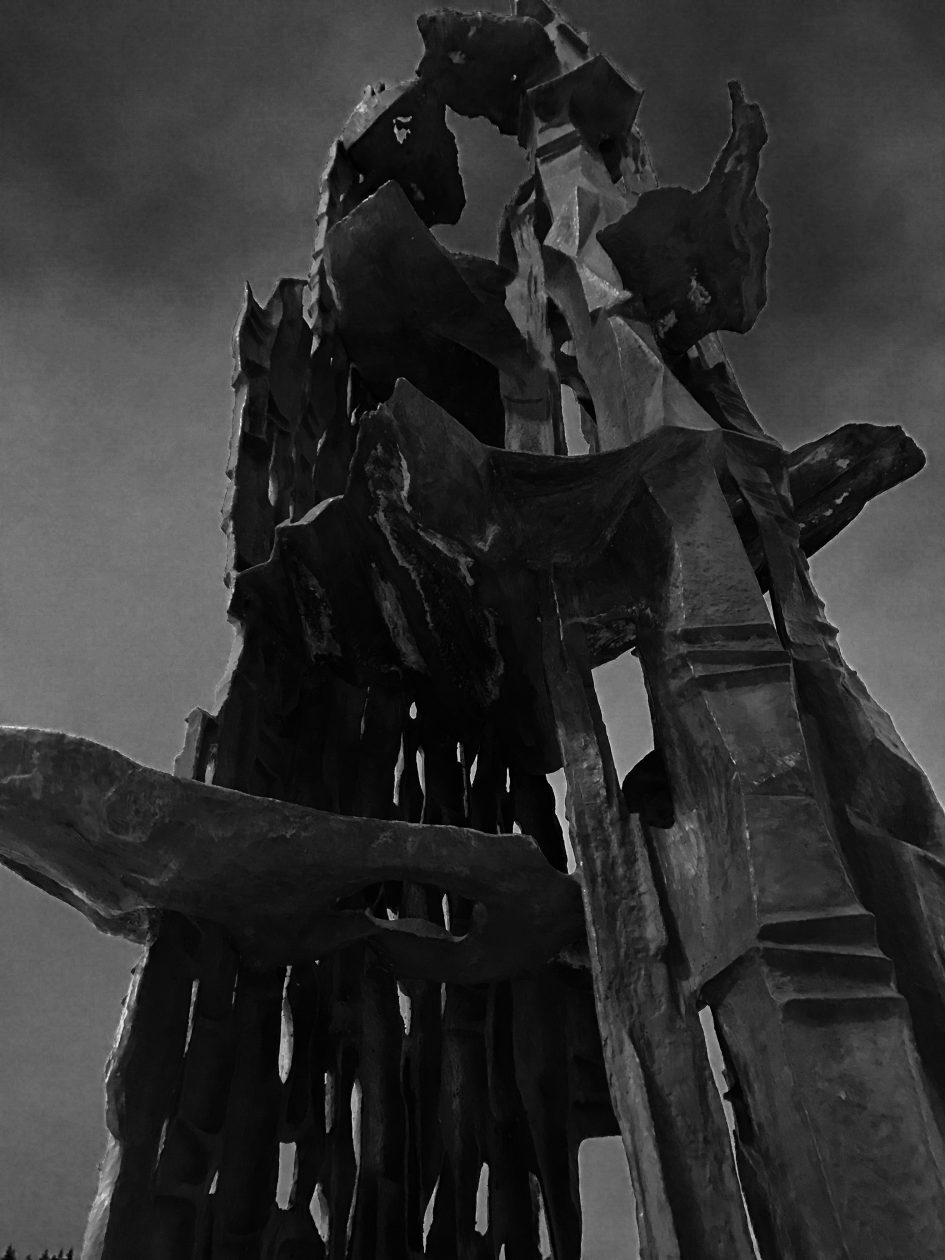





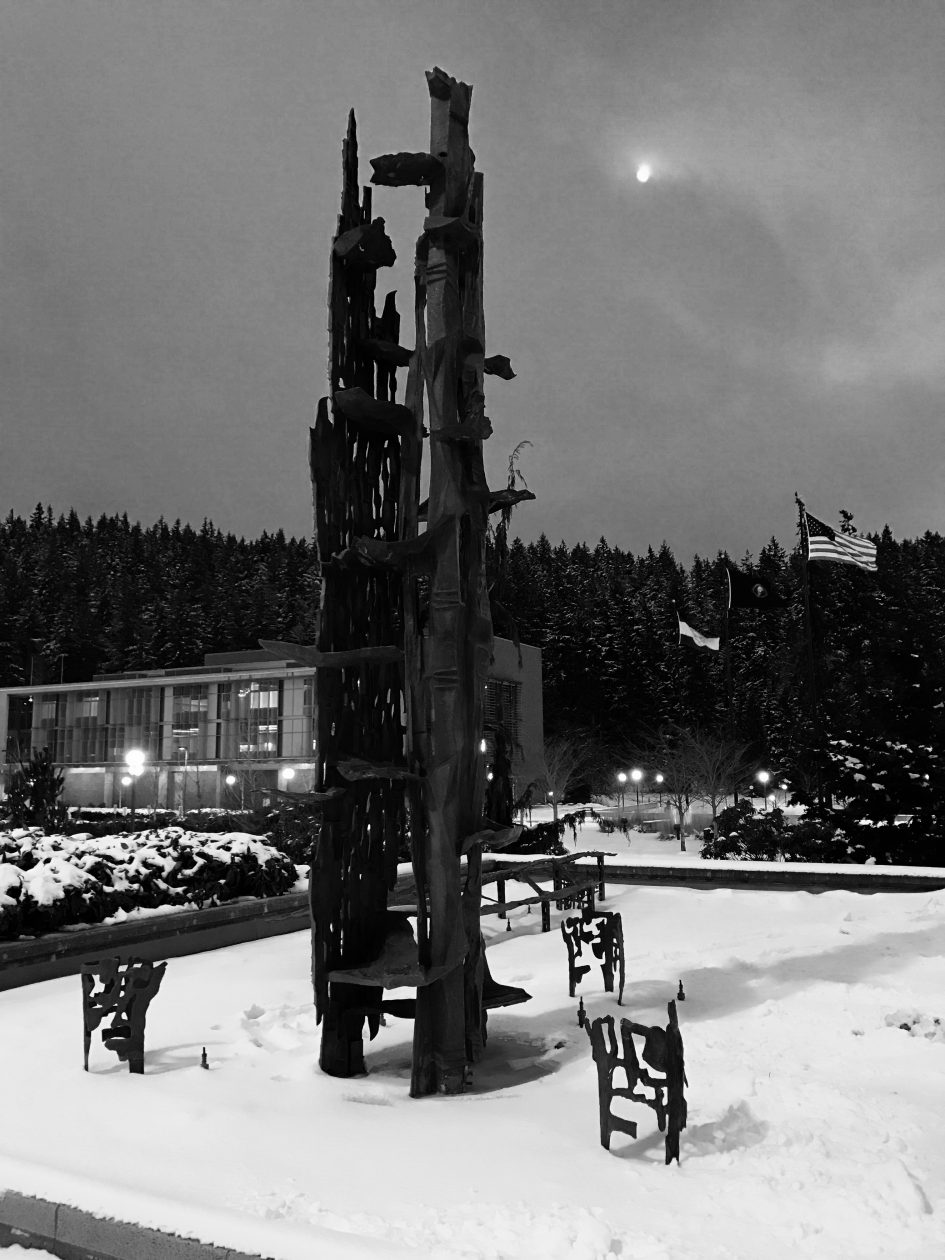


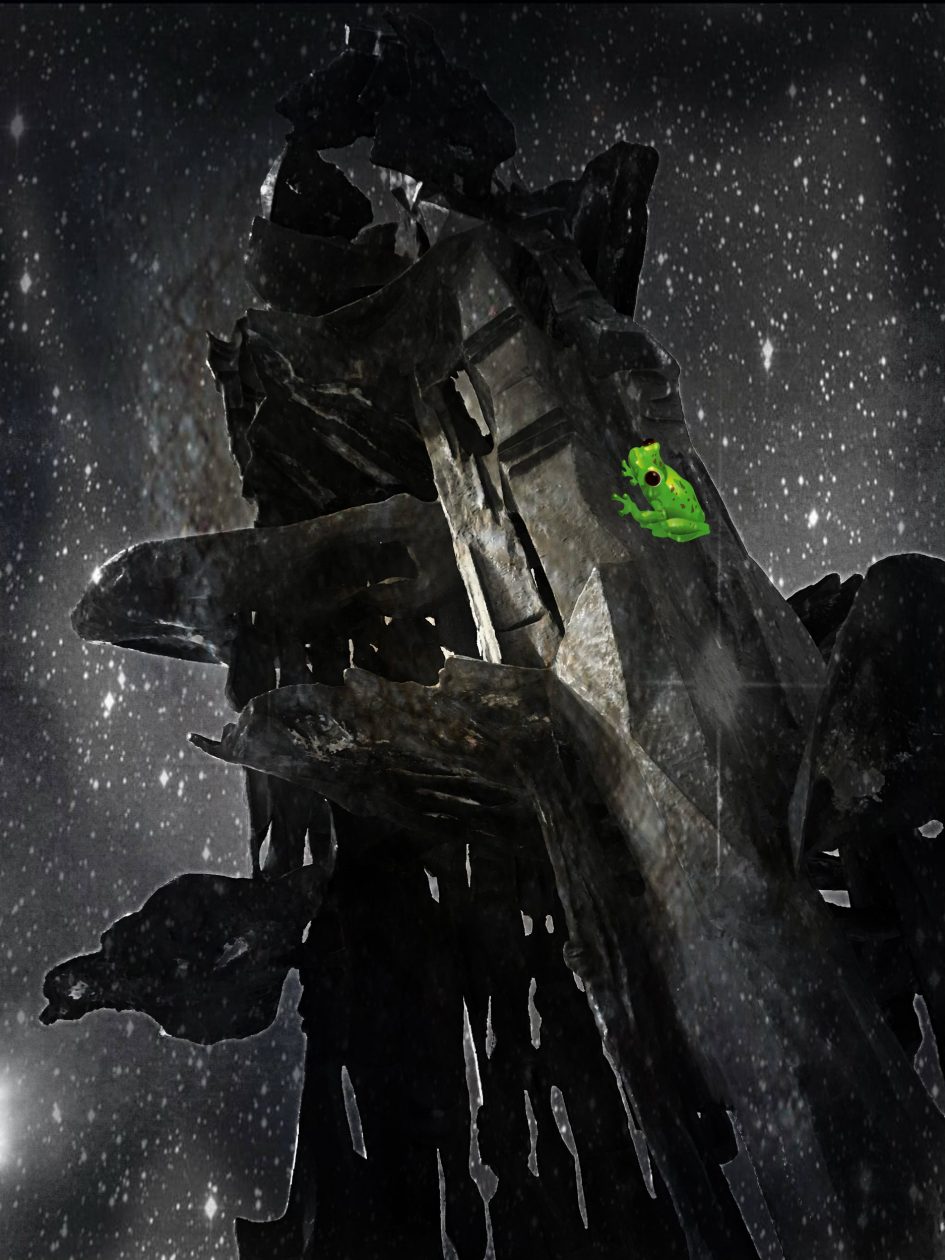

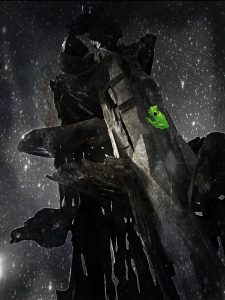
Leave a Reply